Plains zebras sport a black-and-white look in the savannas and plenty of fish take on the same contrasting appearance throughout our oceans. Discover 10 black and white fish found throughout the world and enjoy pictures of each!
10 Black and White Fish
1. Magpie Perch
Scientific name: Cheilodactylus nigripes
You can find the magpie perch throughout New Zealand, Easter Island, and the southern region of Australia. This fish loves hanging out around rocky reefs and you can distinguish it by the three black bands that contrast its white base color. Two of the black bands run down its body and one runs down its face, right through its eyes. If a magpie perch is still a juvenile, the black bands may be more of a gray color and their tails may be more of a reddish tone. Their tails get darker and have more of a brownish tone in adulthood.
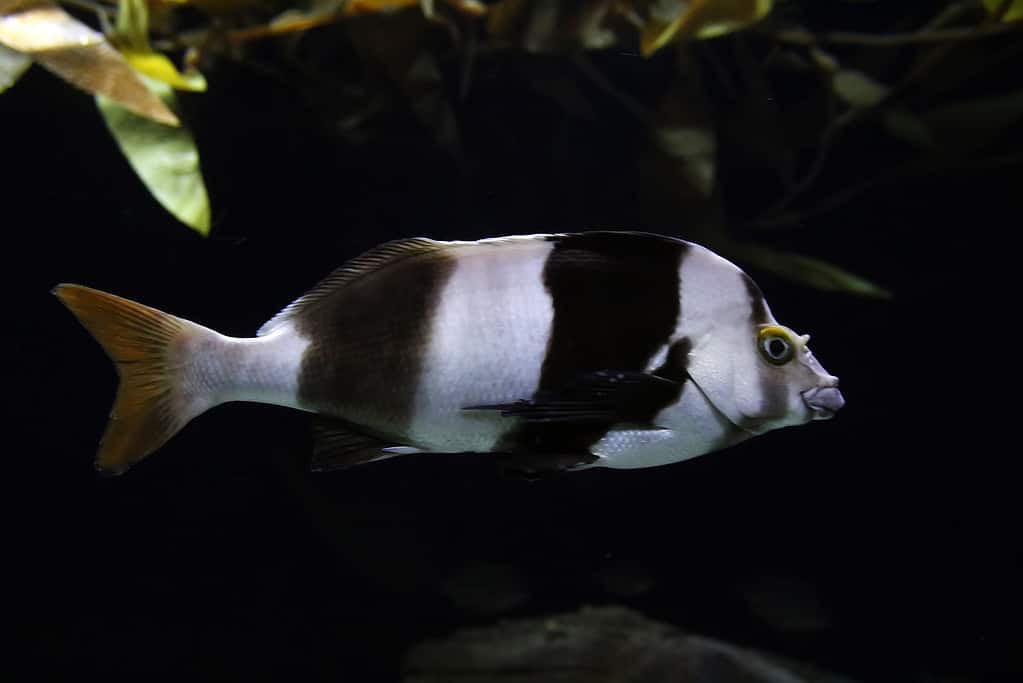
The magpie perch can be identified by its three vertical black bands which stand out against its white base color.
©iStock.com/membio
2. Black and White Clownfish
Scientific name: Amphiprion ocellaris
You’ve seen the colorful variations of clownfish like Nemo in the popular animated film, but there is also a much more muted version of this fish. The black and white clownfish goes by other names that include the black percula. Whereas some fish have a white base color, the black and white clownfish’s base color is jet black. It has three white stripes that run vertically down its body.
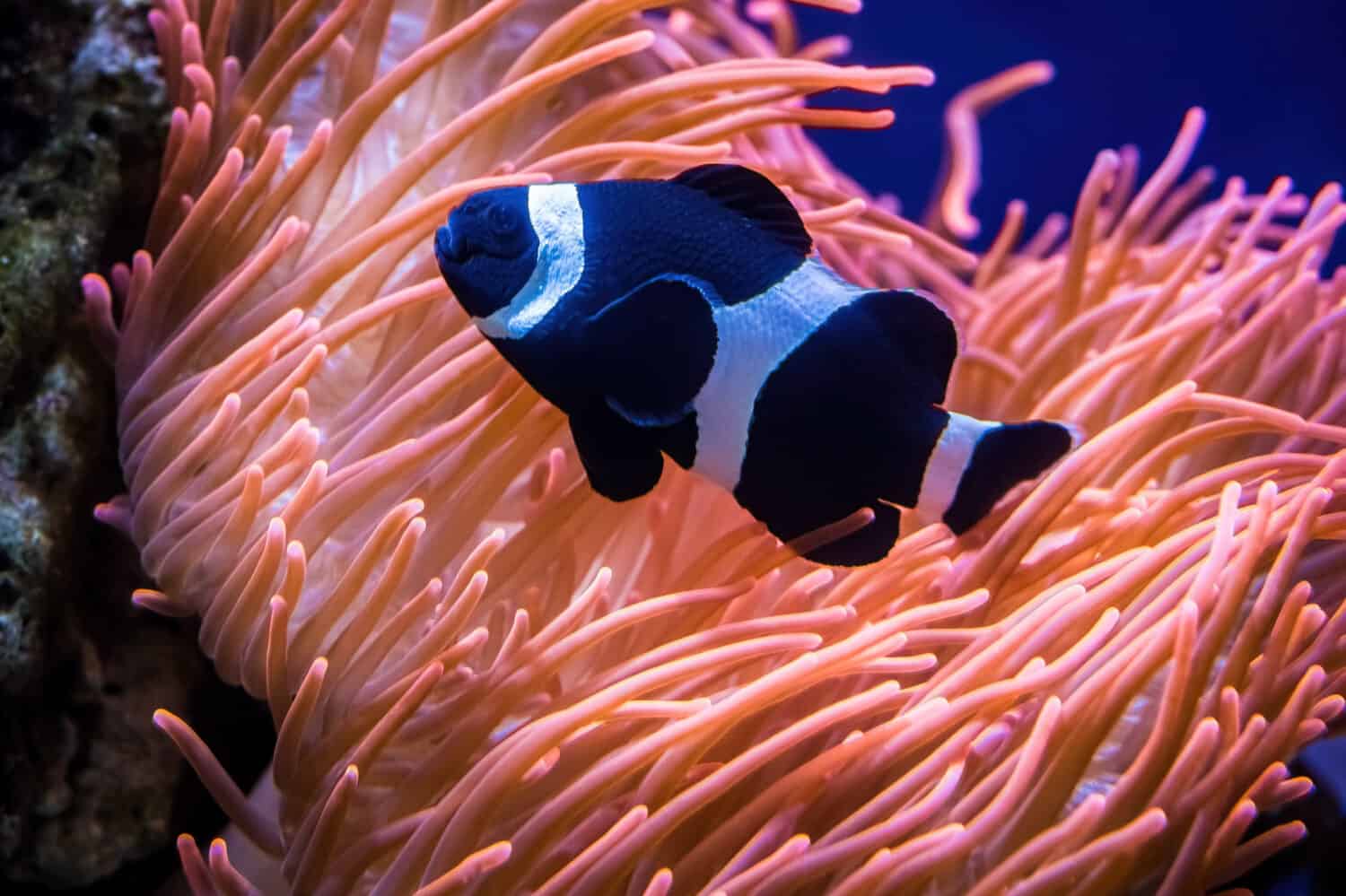
The black and white clownfish’s base color is jet black.
©Dr. Victor Wong/Shutterstock.com
3. Moorish Idol
Scientific name: Zanclus cornutus
The Moorish idol is a diurnal fish that only heads down toward the reef when it’s nighttime. They prefer subtropical climates, which means you can find them in the Hawaiian Islands and Japan among other regions. Three black vertical bars decorate their white bodies. They are further accentuated with a pop of color as their bodies also boast two pale yellow bars.
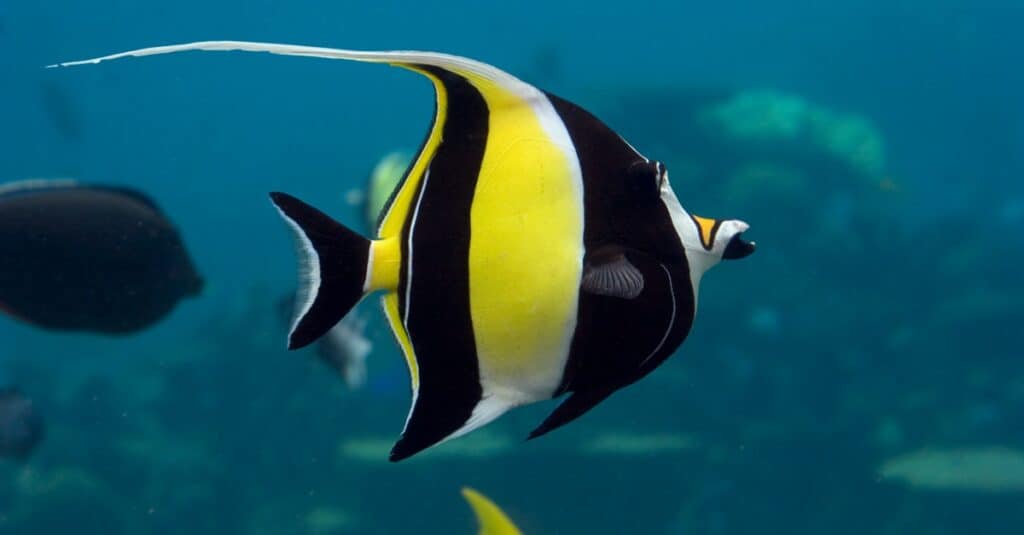
Moorish idols are diurnal, meaning they are active during the day.
©iStock.com/qldian
4. Atlantic Spadefish
Scientific name: Chaetodipterus faber
Atlantic spadefish are shaped much like discs. Their snouts are quite blunt, and their bodies are covered with irregular blackish bands that run vertically on their sides. These are schooling fish whose bodies appear mostly white but are more of a reflective silvery color.
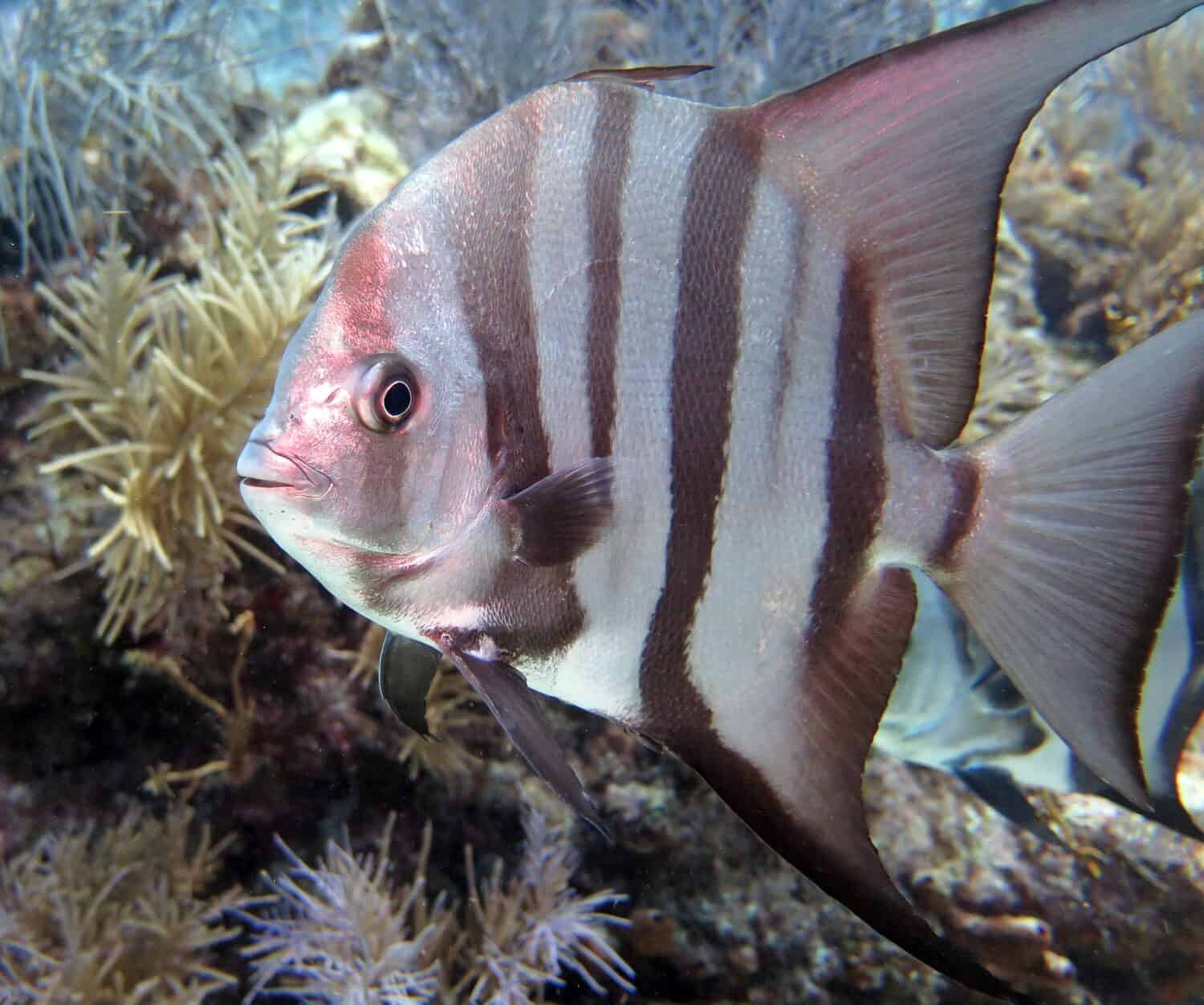
Atlantic spadefish appear white but are more of a reflective silvery color.
©Daryl Duda/Shutterstock.com
5. Banded Butterfly Fish
Scientific name: Chaetodon striatus
Banded butterfly fish are small-mouth fish you can find throughout the western Atlantic, dipping down into the Gulf of Mexico. They have two large black bars that run alongside either side of their bodies and distinguish them from other fish. Their bodies are white, and their fins are highlighted with bits of yellow.
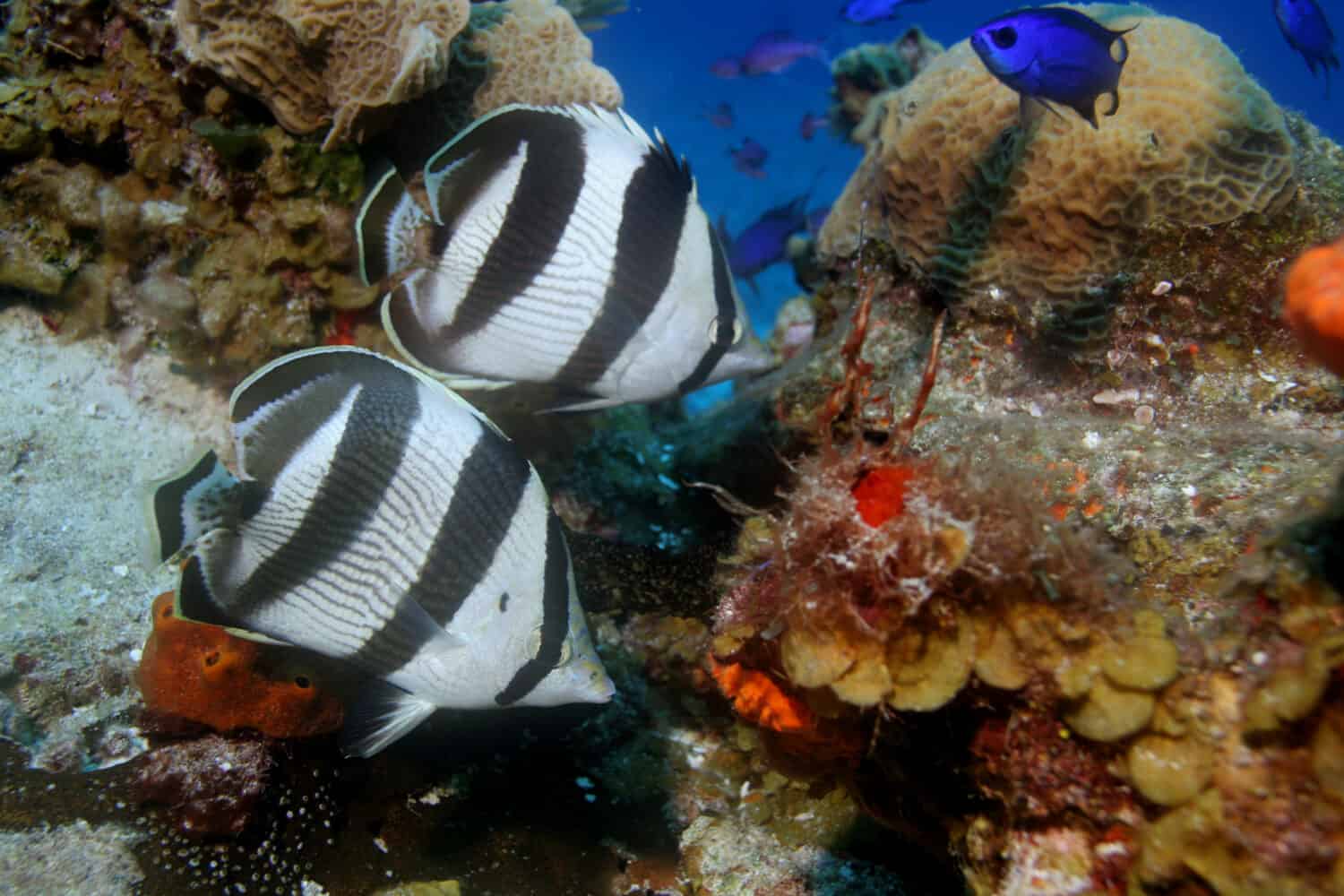
Banded
butterfly
fish sport a yellow highlight on their fins.
©ben recher/Shutterstock.com
6. Moonlighter
Scientific name: Tilodon sexfasciatus
Moonlighter fish enjoy subtropical climates and can be found in the eastern portion of the Indian Ocean. They have deep bodies covered in black bars. They are silvery white with portions of their bodies covered in a yellowish haze. One of the black bars on its body is positioned toward its head and crosses through the eye.
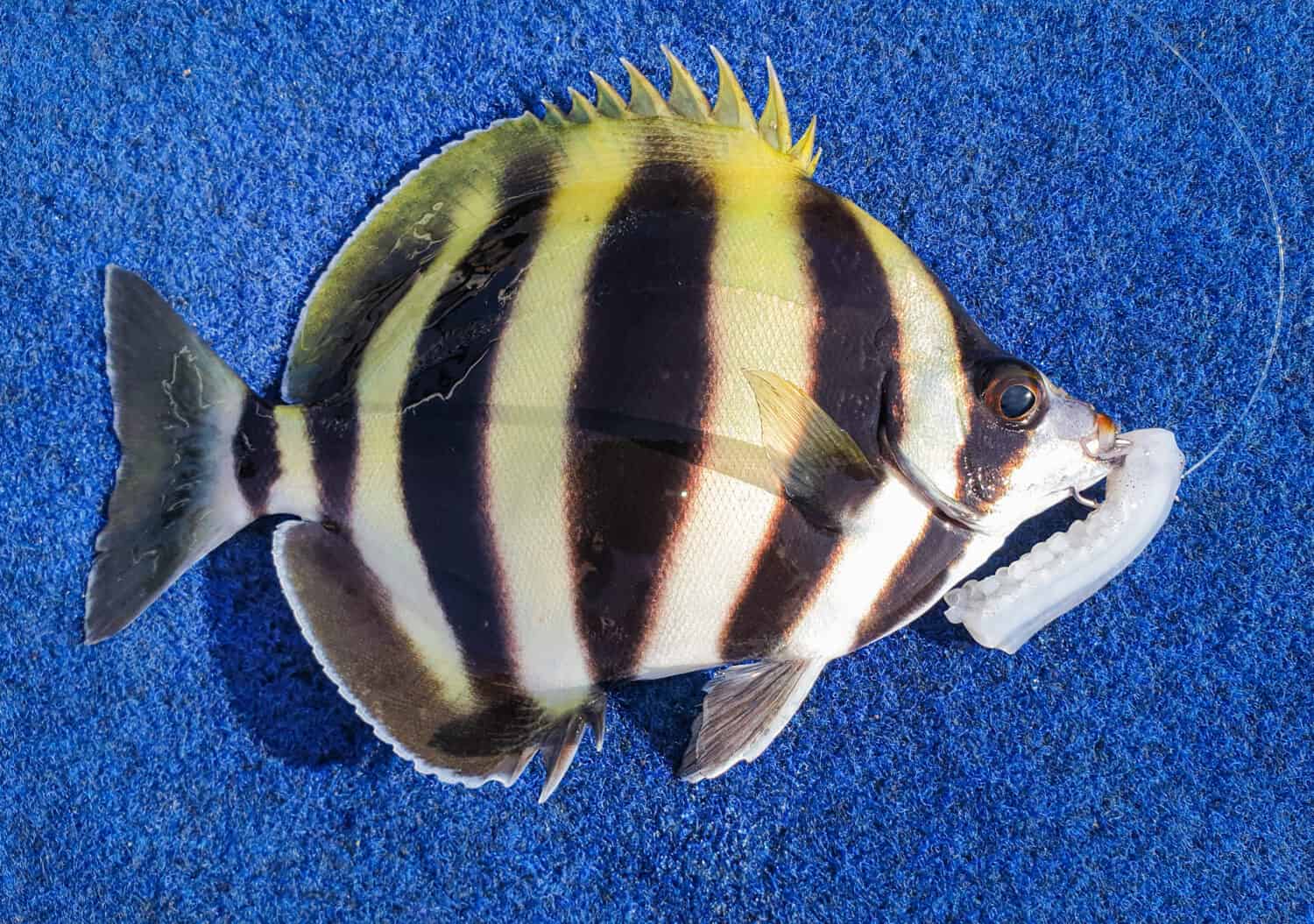
Moonlighter fish are silvery white with portions of their bodies covered in a yellowish haze.
©Steven Giles/Shutterstock.com
7. Black Guineafowl Puffer
Scientific name: Arothron meleagris
Although many of the fish in this list have black patterns on their bodies, the black guineafowl puffer has a unique look. These fish have a black base color throughout their bodies and instead of stripes or bars, are littered with tiny white spots. Sometimes, they have other colorations that include bright yellow. They are heavy and round and like other puffers, puff up as a defense mechanism when in the face of a predator.
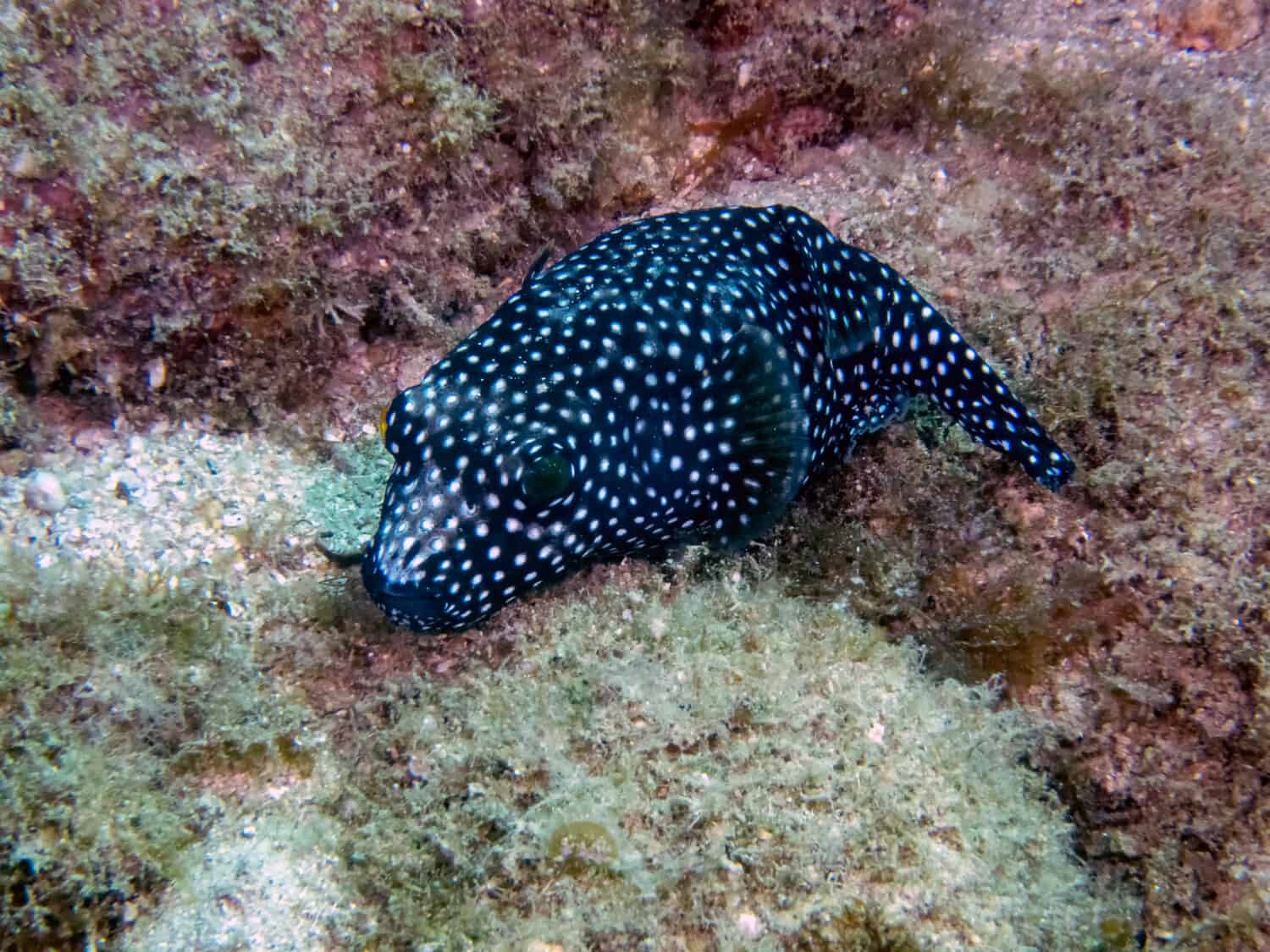
Instead of stripes or bars, black guineafowl puffer fish are littered with small white spots.
©Rob Atherton/Shutterstock.com
8. Western Talma
Scientific name: Chelmonops curiosus
If there is a vertical rock face in the eastern region of the Indian Ocean, you’re likely to spot a western talma. These fish thrive in the subtropical climate, often feeding on crustaceans and worms. Their snouts are long and pointed and their bodies are silvery, appearing white when light reflects on them. Their bodies have a total of five dark, blackish bars that contrast nicely against their otherwise bright bodies.
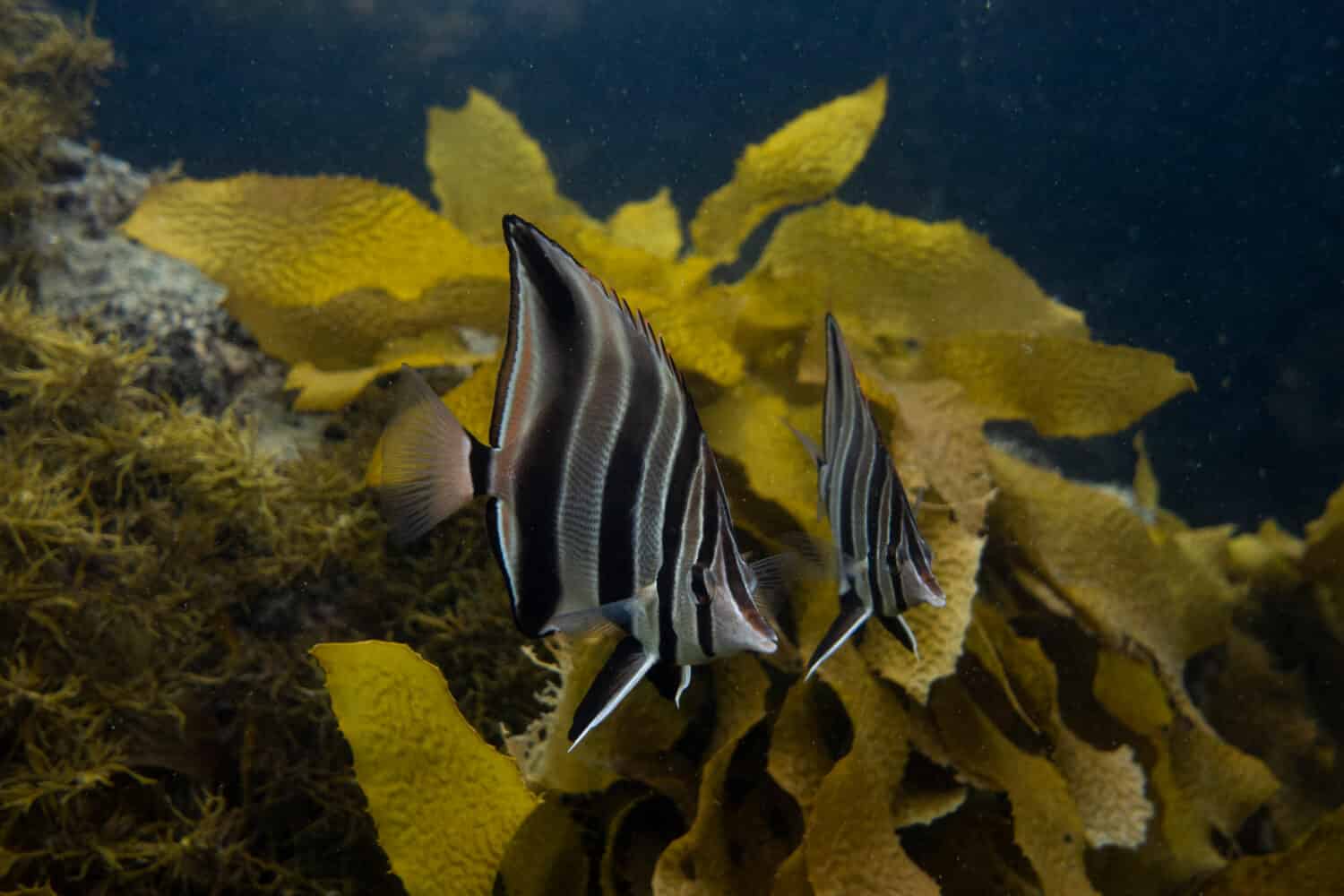
Western talmas thrive in subtropical climates.
©Qiaz Hua/Shutterstock.com
9. Scissortail Sergeant
Scientific name: Abudefduf sexfasciatus
Whether the rocky reefs are inshore or outshore, scissortail sergeants are happily swimming about. They also enjoy reef flats around shallow areas. Their preference is a tropical climate and you can find them in Japan, Mozambique, and several isles like the Lord Howe and Rapa Islands. These are white fish that have five black vertical bands on their bodies.
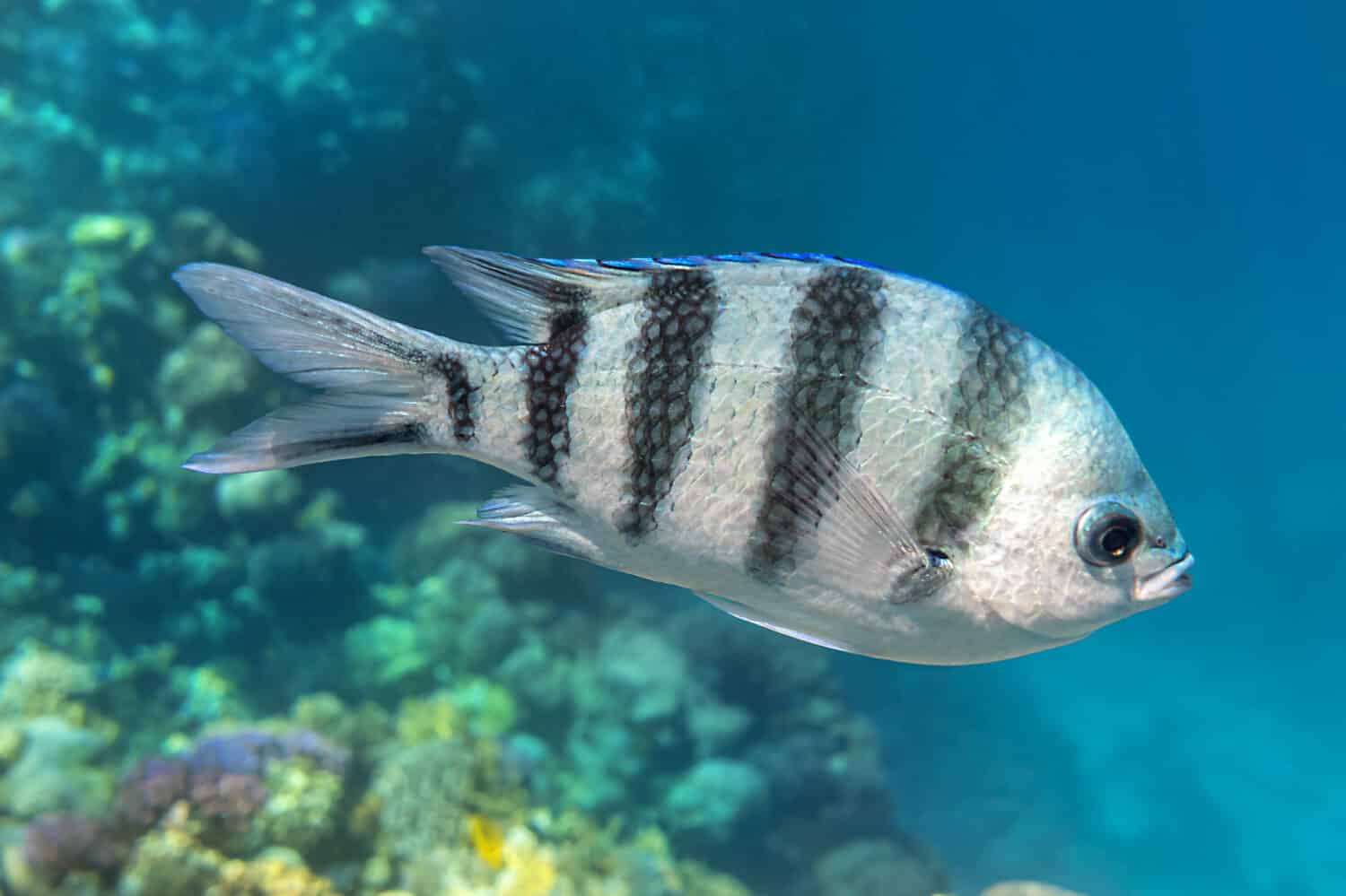
Scissortail sergeants enjoy flat and rocky reefs.
©maya_parf/Shutterstock.com
10. Spotted Drum
Scientific name: Equetus punctatus
Often solitary, the spotted drum sports a skunk-like front dorsal fin. These fish gravitate toward coral reefs where the climate is tropical. They have white heads with two dark bars that run down them, one of which goes through the eye. The dark bands on their bodies are brownish blackish and their back dorsal fins and tail are dark with white spots.
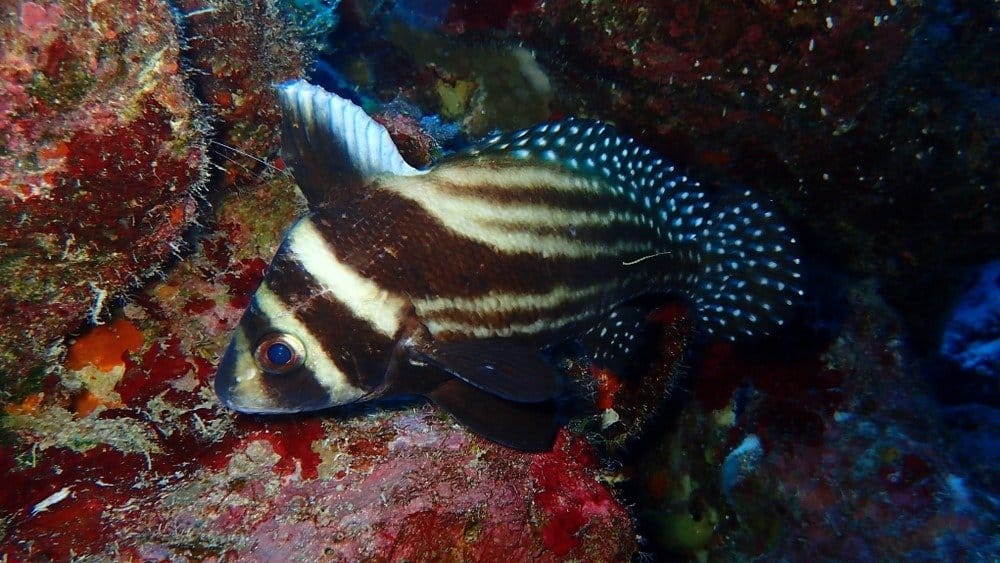
The spotted
drum fish
back dorsal fins and tail are dark with white spots.
©Mara Feodor/Shutterstock.com
The photo featured at the top of this post is © Eric Carlander/Shutterstock.com
Thank you for reading! Have some feedback for us? Contact the AZ Animals editorial team.






